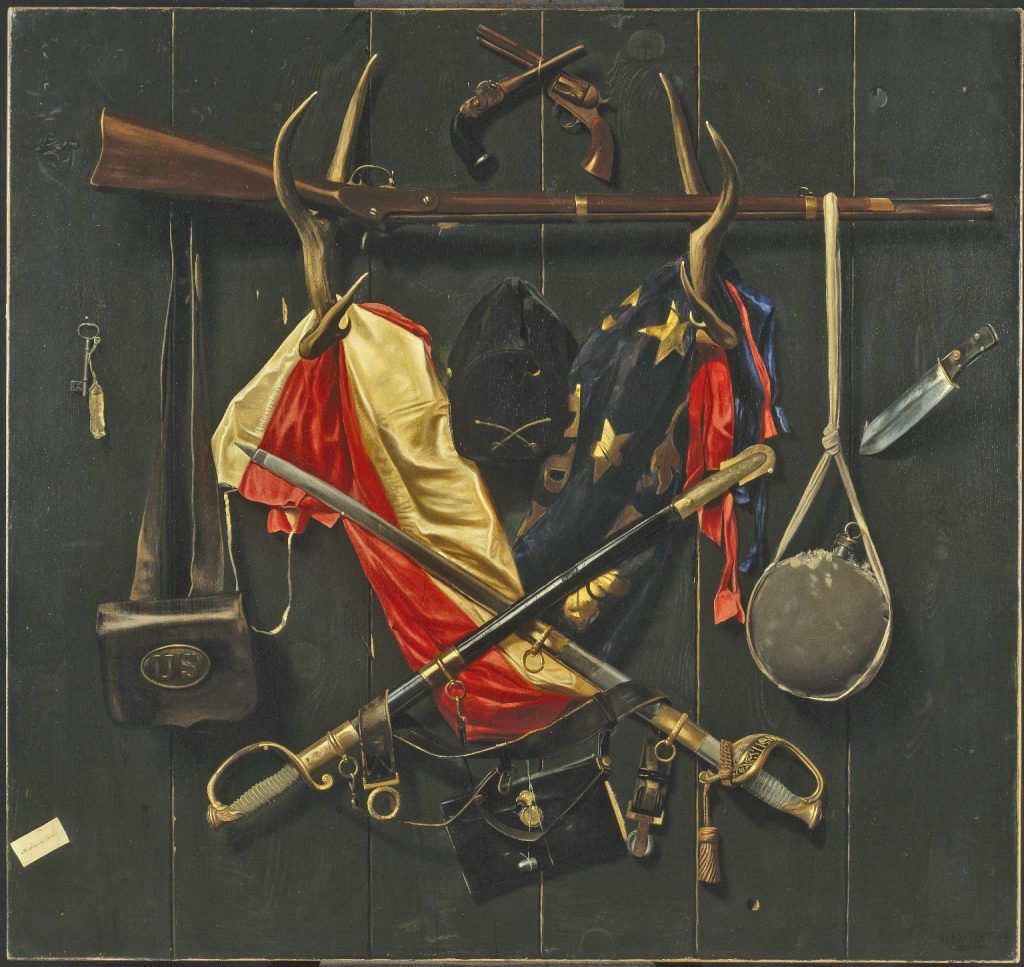
Alexander Pope, Jr., Emblems of the Civil War
Dorchester Illustration 2685
Today’s illustration is a painting by Alexander Pope, Jr., of a wooden wall with artifacts from the Civil War, the painting is titled Emblems of the Civil War.
Pope first worked for the family lumber company in Dorchester. He first began using his talent as an artist by carving animals from wood. He went on to become a very well-known painter.
The following is from various internet sources:
“Alexander Pope Jr. (1849-1924) was a renowned American sporting artist who specialized in animal and still life paintings. Born in Dorchester, Massachusetts in 1849, he briefly studied sculpture with the prominent artist William Copley and essentially taught himself to paint. As a youth, Alexander Pope carved and sketched animals around his home in Massachusetts. In the 1860s, he worked for his family’s lumber business (at Neponset). Although primarily lauded as a painter, he continued producing sculptures well into the 1880s and later became a member of the famed art association the Copley Society of Boston.
“In 1878 and 1882, he published two important portfolios of chromolithographs after his watercolors: Upland Game Birds and Water Fowl of the United States and Celebrated Dogs of America. In addition to his more conventional animal paintings, Pope was also known for his still-life compositions of dead animals hanging in the interior of wooden crates, which innovatively combined his avid interest in hunting and fishing with the trompe l’oeil style of painting. His works and those of the influential trompe l’oeil painter William Harnett (1848-1892) helped popularize the genre of still life in late nineteenth-century America.
“Throughout the late 1880s, Pope painted large trompe l’oeil still lifes, a painting technique that literally means, “that which deceives the eye.” Pope reproduced realistic images that fool the viewer’s eyes into perceiving the image as three dimensional.”
